
The Narrow Margin is a 1952 American film noir starring Charles McGraw and Marie Windsor. Directed by Richard Fleischer, the RKO picture was written by Earl Felton, based on an unpublished story written by Martin Goldsmith and Jack Leonard. The screenplay by Earl Felton was nominated for an Academy Award.
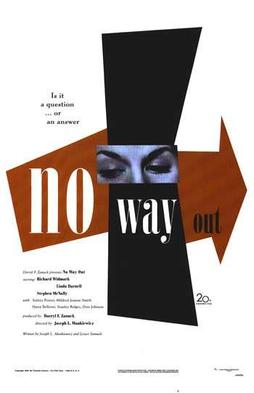
No Way Out is a 1950 American crime drama film noir directed by Joseph L. Mankiewicz and starring Sidney Poitier in his film debut, alongside Richard Widmark, Linda Darnell and Stephen McNally. The film centers on an African American doctor who confronts the racism of a poor slum after he treats a racist white criminal.

Warning Shot is a 1967 American crime-thriller film directed and produced by Buzz Kulik and starring David Janssen, Joan Collins, Keenan Wynn, Ed Begley, Stefanie Powers, Sam Wanamaker, George Grizzard, Carroll O'Connor, Steve Allen, Eleanor Parker, Walter Pidgeon, George Sanders and Lillian Gish. The screenplay concerns a police sergeant who kills a man while on a stakeout, then must prove that it was self-defense. The screenplay by Mann Rubin was based on the 1965 novel 711 - Officer Needs Help by Whit Masterson.

The Prowler is a 1951 American film noir thriller film directed by Joseph Losey that stars Van Heflin and Evelyn Keyes. The film was produced by Sam Spiegel and was written by Dalton Trumbo. Because Trumbo was blacklisted at the time, the screenplay was credited to his friend, screenwriter Hugo Butler, as a front.
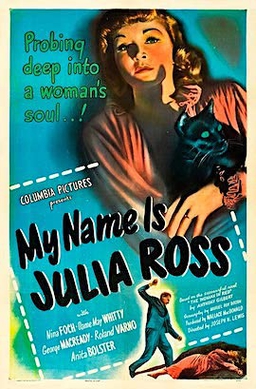
My Name Is Julia Ross is a 1945 American film noir thriller directed by Joseph H. Lewis, and starring Nina Foch, Dame May Whitty, and George Macready. Its plot follows a young woman in England who is hired as a live-in secretary for an ailing widow, where she awakens one day and is gaslit by those around her, claiming she is someone else. The screenplay is based on the 1941 novel The Woman in Red by Anthony Gilbert. The film received a loose remake called Dead of Winter (1987), starring Mary Steenburgen.

The Locket is a 1946 American psychological thriller film noir directed by John Brahm, starring Laraine Day, Brian Aherne, Robert Mitchum, and Gene Raymond, and released by RKO Pictures. The film is based on a screenplay by Sheridan Gibney, adapted from "What Nancy Wanted" by Norma Barzman, wife of later-blacklisted writer Ben Barzman. It is noted for its complex and confusing use of layered flashbacks within flashbacks to give psychological depth to the narrative.

Street Corner is a 1948 American exploitation film directed by Albert H. Kelley, produced by Wilshire Pictures, and featuring Johnny Duncan, Eddie Gribbon, and Marcia Mae Jones. It was released on DVD in 2003 by Something Weird Video.
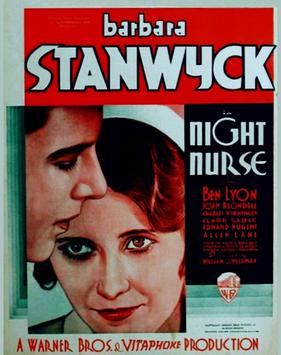
Night Nurse is a 1931 American pre-Code crime drama mystery film produced and distributed by Warner Bros. directed by William A. Wellman, and starring Barbara Stanwyck, Ben Lyon, Joan Blondell and Clark Gable. The film is based on the 1930 novel of the same name by Dora Macy, the pen name of Grace Perkins. The film was considered risqué at the time of its release, particularly the scenes where Stanwyck and Blondell are shown in their lingerie. Clark Gable portrays a viciously violent chauffeur who is gradually starving two little girls to death after having already purposely run over their slightly older sister with a limousine, killing her.

Marianne Stone was an English character actress. She performed in films from the early 1940s to the late 1980s, typically playing working class parts such as barmaids, secretaries and landladies. Stone appeared in nine of the Carry On films, and took part in an episode of the Carry On Laughing television series. She also had supporting roles with comedian Norman Wisdom.

Three Strangers is a 1946 American film noir crime drama directed by Jean Negulesco and starring Sydney Greenstreet, Geraldine Fitzgerald, and Peter Lorre, and featuring Joan Lorring and Alan Napier. The screenplay was written by John Huston and Howard Koch. It was produced and distributed by Warner Brothers.

Decoy is a 1946 American film noir starring Jean Gillie, Edward Norris, Robert Armstrong, Herbert Rudley, and Sheldon Leonard. Directed by Jack Bernhard, it was produced by him and Bernard Brandt as a Jack Bernhard Production, with a screenplay by Nedrick Young based on an original story by Stanley Rubin.
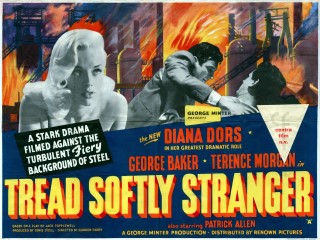
Tread Softly Stranger is a 1958 British crime drama film directed by Gordon Parry and starring Diana Dors, George Baker and Terence Morgan. The screenplay was written by George Minter adapted from the stage play Blind Alley (1953) by Jack Popplewell. The film was shot in black-and-white in film noir style, and its setting in an industrial town in northern England mirrors the kitchen sink realism movement coming into vogue in English drama and film at the time.

Assault is a 1971 British thriller film directed by Sidney Hayers and starring Suzy Kendall, Frank Finlay, Freddie Jones, and Lesley-Anne Down. The screenplay was by John Kruse based on the 1962 novel The Ravine by Phyllis Bretty Young and tells about a police attempt to track down a dangerous rapist/killer on the loose.
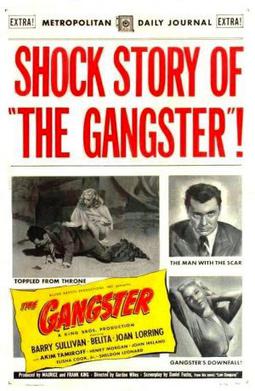
The Gangster is a 1947 American crime film noir starring Barry Sullivan, Belita, Joan Lorring and Akim Tamiroff. It was directed by Gordon Wiles, with a screenplay by Daniel Fuchs, based on his novel Low Company (1937).

Women's Prison is a 1955 American film noir crime film directed by Lewis Seiler and starring Ida Lupino, Jan Sterling, Cleo Moore, Audrey Totter, Phyllis Thaxter and Howard Duff.
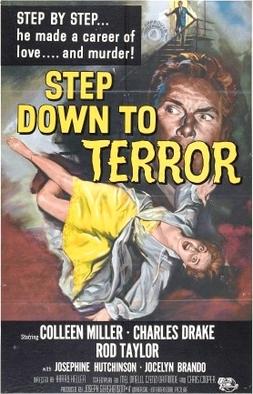
Step Down to Terror is a 1958 American film noir crime film directed by Harry Keller and starring Colleen Miller, Charles Drake and Rod Taylor. It is a remake of the 1943 Alfred Hitchcock film Shadow of a Doubt.

The Good Doctor is a 2011 American thriller film directed by Lance Daly, and starring Orlando Bloom as the eponymous "good doctor".
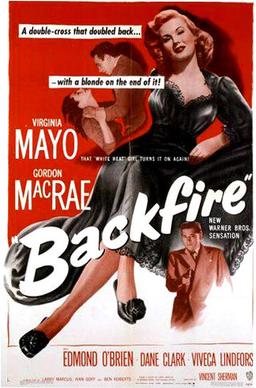
Backfire is a 1950 American film noir crime film directed by Vincent Sherman starring Virginia Mayo and Gordon MacRae, with Edmond O'Brien, Dane Clark, and Viveca Lindfors in support.

Helene Ottilie Thimig was an Austrian stage and film actress.

She Devil is a 1957 American widescreen science fiction horror film, shot in RegalScope, from Regal Films, that was produced, written, and directed by Kurt Neumann. The film stars Mari Blanchard, Jack Kelly, and Albert Dekker and was theatrically released by 20th Century-Fox on a double bill with Regal's Kronos.




















